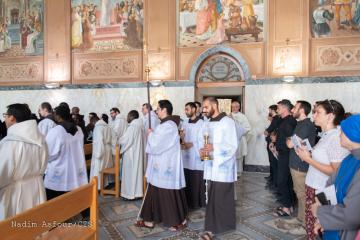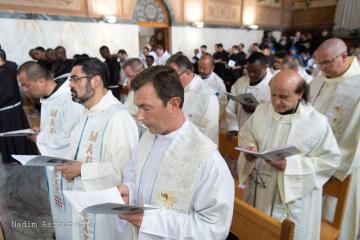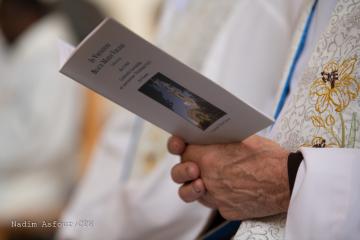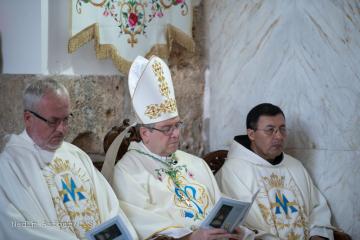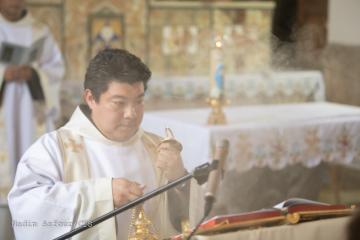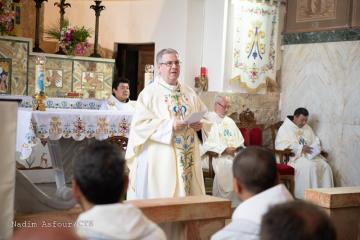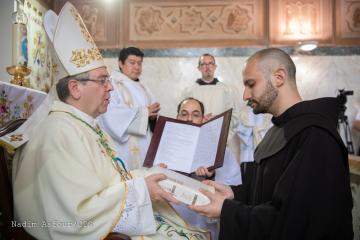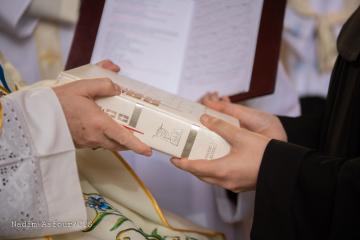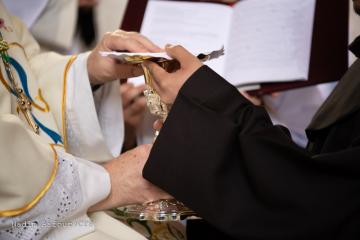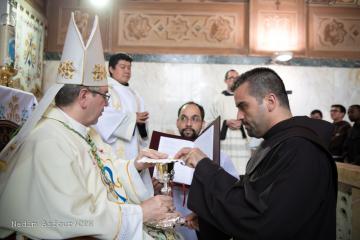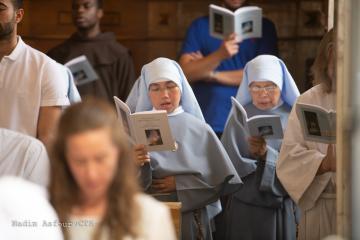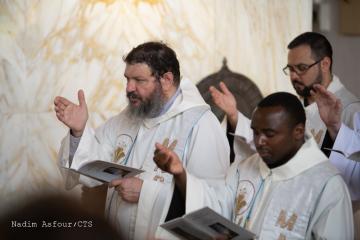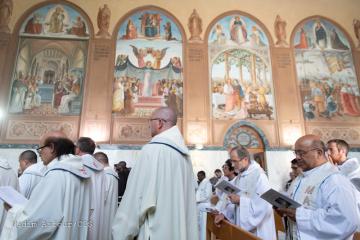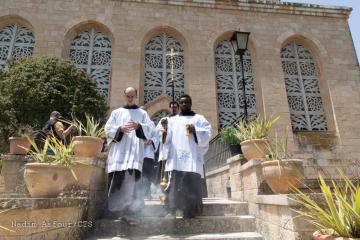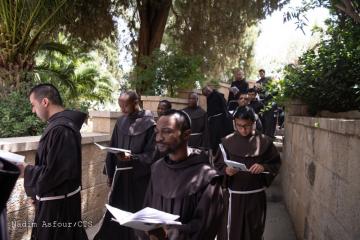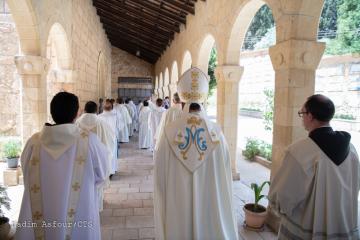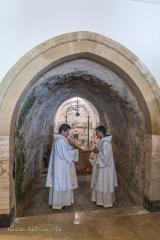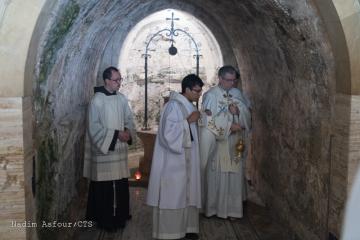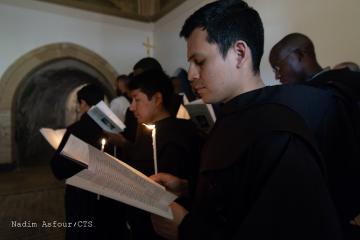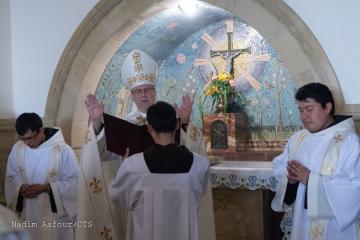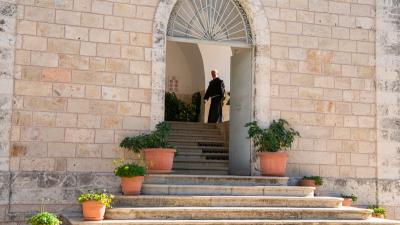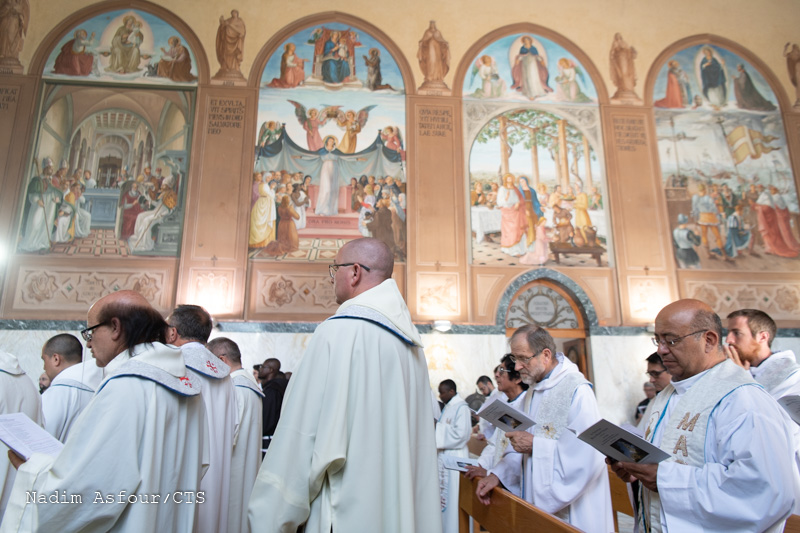
When the Virgin Mary visited her cousin Elizabeth and the woman heard her greeting, the child trembled in her womb and she blessed Mary. The mother of Jesus then said the famous prayer of the Magnificat (Luke 1,39-56). This evangelical episode is traditionally believed to have taken place in Ain Karem, a village of priests just outside Jerusalem, where the family of the husband of Elizabeth, Zachariah, lived. The canticle of the Magnificat in different languages adorns the entrance to the shrine of Ain Karem, where the Franciscan friars celebrated a Solemn Mass on 31 May, the feast of the Visitation.
During the celebration, two friars of the Custody of the Holy Land received the ministry of reader and fourteen others the ministry of the acolyte.
“Consider it a grace to be able to receive these ministries, linked to the Word and the Eucharist, on the feast-day of the visit of Our Most Blessed Virgin Mary to St Elizabeth,” the Custos of the Holy Land said in the homily. “The young Mary who hurries to her cousin Elizabeth is an example and a powerful image of what it means to welcome the Word of God so that it becomes flesh, but also what it means to transmit the Word of God which has been made flesh and give it with joy. Both in the service of lectors and in the service of acolytes, learn from Mary.” The moment when Mary greets Elizabeth, according to the Custos of the Holy Land, is not a time of a formal and conventional greeting, but the Greek verb used to say that Mary greeted her cousin Elizabeth (ἀσπάζομαι) contains a physical dimension: it tells us that the greeting takes place with the two people embracing.
“If you wish to serve the Lord, remember this and learn this: Mary gets up and sets off in haste and remains at service for a prolonged period of time, Do not be lazy, therefore, in serving,” Fr. Patton added (the complete homily is here ).
The place where tradition puts the house of Zachariah and Elizabeth, where Mary met her cousin, is today in the crypt of the church of the Visitation, a small grotto frescoed with the story of the three Gospel episodes connected with this place. One of the frescoes tells us that John the Baptist also ran the risk of being killed by King Herod and, to escape the massacre, hid with his mother in a rock half dug-out in the right wall of the grotto. In this exact place, the friars and the faithful went in procession into the crypt of the church, at the end of the Solemn Mass of the Visitation.
In the Holy Land for thirty years and superior of the convent of the Visitation for three years, Fr. NicolásMarquéz-Gutiérrez told us about how this year was special: “Although the pandemic is still present in the world, here the situation is different and this has allowed us, as a local church, to celebrate the feast-day this year with such great solemnity and with a large number of worshippers.” After the long lockdown due to the Coronavirus, today the shrine of the Visitation is open again to pilgrims and visitors but has reduced opening hours which are from Tuesday to Sunday from 9 a.m. to 12 noon.
Previously in the care of Armenian monks in the fourteenth century, the shrine was purchased by the Franciscans in 1679. The architect Antonio Barluzzi built the present-day upper church between 1938 and 1940 and its façade decorated with a mosaic (by B. Biagetti) still shines today in the sunlight.
Beatrice Guarrera


